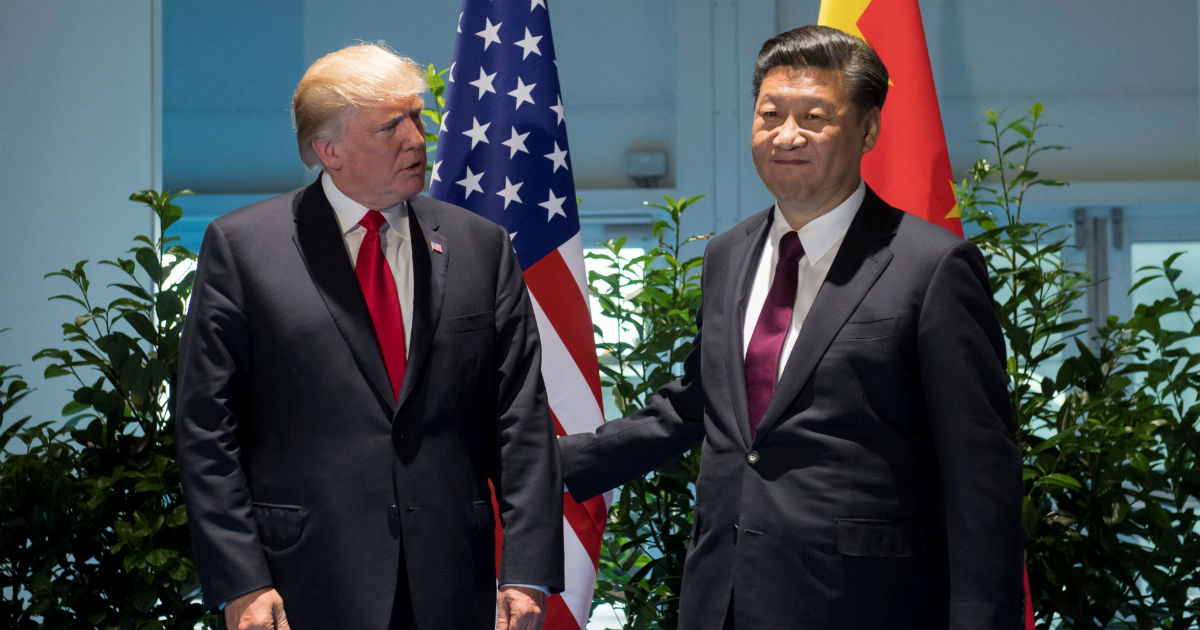
 US President Donald Trump and Chinese President Xi Jinping (R) meet on the sidelines of the G20 Summit in Hamburg, Germany, July 8, 2017 | REUTERS/Saul Loeb
US President Donald Trump and Chinese President Xi Jinping (R) meet on the sidelines of the G20 Summit in Hamburg, Germany, July 8, 2017 | REUTERS/Saul Loeb
The National Defense Authorization Act (NDAA) for fiscal year 2019 is another indicator that the escalating fight between Washington and Beijing isn't limited to current account balances.
While headlines focus on tariffs, the Trump administration hopes these levies force changes to China trade rules and practices designed to protect U.S. critical technology platforms. Congress, pushing even tougher tactics, warns of national security threats from China and tasks the Pentagon to lead risk management in the latest NDAA.
Since Beijing won U.S. and international support for entering the World Trade Organization (WTO), U.S. multinationals interested in the Chinese market have been forced to offer generous terms to mandatory Chinese joint venture partners.
While U.S. firms acquired access, such obligatory partnerships also allowed China to appropriate intellectual property, accelerating the country's growth and dual-use technological expertise. This forced technology transfer has threatened key areas of U.S. national security, a pattern the Trump administration hopes to slow.
Congress' FY19 NDAA replicates a tougher public stance against China than any of President Trump's predecessors, at least on strategic matters.
As trade tensions fueled by tariffs escalate between the countries, the pending fight over China's critical technology strategies is far more important to the relationship — and in some cases, to U.S. national security.
This confrontation has not yet begun but the NDAA conforms to a series of U.S. actions establishing a harder line against China.
The conference report credibly claims to be the first comprehensive tasking of the Department of Defense (DoD) with frontline coordination of cybersecurity efforts.
Members instruct the agency to improve cross-services efforts under joint command and obligates DoD to timely cyber-breach reporting and cyber-threat preparation to strategic readiness challenges and investments — all new initiatives to counter cyber threats.
In December 2017, the president signed a national security strategy designating both China and Russia as economic adversaries, effectively coupling U.S. national and economic security.
The NSS and pending NDAA conference report reflect a unified concern about China's exploitation of the U.S. technology industrial base.
Ongoing attempts by Beijing to fund Chinese commercial stakes in U.S. mergers and acquisitions has been a persistent source of friction since China's WTO ascension but have come to the fore under this White House and Congress.
This bipartisan, bicameral focus on technology-driven vulnerabilities makes curious the president's reversal of his Commerce Department's denial order against ZTE.
A company proven to have violated U.S. laws would have suffered mightily under bipartisan Senate language placing onerous requirements on ZTE sourcing of U.S. components or selling into U.S. markets.
The president's decision points to commercial realities winning out over national security concerns, a tension that we are likely to continue to see as economic concerns escalate.
A further signal of Congress' intent to pressure China in the NDAA is the direct targeting of Beijing in the document. Of the four countries highlighted as key adversaries requiring specific strategic planning (Russia, China, North Korea and Iran), China received unusual and pointed attention.
Congress embraces reforms to the Committee on Foreign Investment in the United States (CFIUS) to acknowledge risks to U.S. interests from China's public/private investment model.
This second meaningful reform of CFIUS is another bipartisan attempt to bolster U.S. protections against China by allowing the committee to dig deeper into proposed cross-border investments.
The Treasury-led committee will have greater authorities to assess national security risks by drilling deeper into beneficial ownership stakes within Chinese firms.
Combined U.S. efforts on trade policy and augmented CFIUS power to slow or stop deals is unmistakably targeted at China's economic model. Many lawmakers of each party believe Chinese trade and investment rules have weakened U.S. national security and the value of some U.S. multinationals' intellectual property.
Whether Washington and Beijing can negotiate safeguards and mutually beneficial trade rules will reflect the prioritization of U.S. national security and commercial concerns.
This article was originally published on TheHill.com